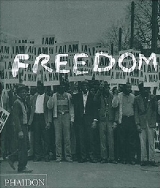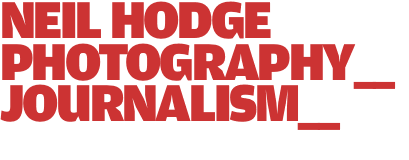Site created by Amplitude. |
||
FREEDOM: A Photographic History of the
African American Struggle review
Text by Manning Marable and Leith Mullings
Pictures edited by Sophie Spencer-Wood
Published in paperback by Phaidon; Price: £24.95 / €39.95
Coinciding with the 40th anniversary of the United States’ decision to finally enfranchise black Americans, Phaidon has published in paperback an authoritative and superb photographic history charting the long African American struggle for civil rights.
Starting with some of the earliest photographic records of the nineteenth century and continuing to the present day, Freedom is the first book to chart the civil rights struggle beyond the official “movement” years of 1954–68. Filled with an unprecedented array of photographs as a result of extensive archival research throughout the US, UK and France, the images range from mid-nineteenth century daguerreotypes to Jesse Jackson campaign shots and photographs of Colin Powell and Congressional Black Caucus members in 2001.
While the civil rights movement in the US is officially recognised as the period between 1954-1968 (“beginning” on 17 May 1954 when the United States Supreme Court ruled on Brown v. Board of Education of Topeka, a decision that outlawed segregation in public schools, through to the assassination of Martin Luther King Jr. on 4 April 1968), the struggle actually began long before that. It is often forgotten that the barbarity of slavery in the American colonies was protested against as far back as the seventeenth century, though it was not until the mid-nineteenth century that the resistance built momentum.
This photographic journey of the African-American struggle for equality begins with abolitionists like Harriet Tubman, who escaped slavery in 1849 and went on to help others to freedom. The selection of photographs also presents milestone events, such as the Little Rock Nine, the Montgomery Bus Boycott, the assassination of Martin Luther King, Jr., and the grotesque beating of Rodney King at the hands of LA police officers. The book chronicles the battle to eradicate slavery through the Civil War (1861-1865) and, then once slavery was officially outlawed, it traces the evolution of its dual legacy – segregation and racism.
This year is the 40th anniversary of President Johnson’s signing of the Voting Rights Act, which enfranchised the vast majority – but not all – black Americans for the first time (the Act has since been amended three times in 1970, 1975, and 1982). Yet considering that President George Bush’s brother Jeb, the governor of Florida, helped his brother steal the election by disenfranchising black voters throughout the state in 2000, and Ohio following the same pattern in 2004, the struggle for African American rights is set to continue.
“Lorem ipsum dolor sit amet, consectetuer adipiscing elit, sed diem nonummy nibh euismod tincidunt ut lacreet dolore magna”

